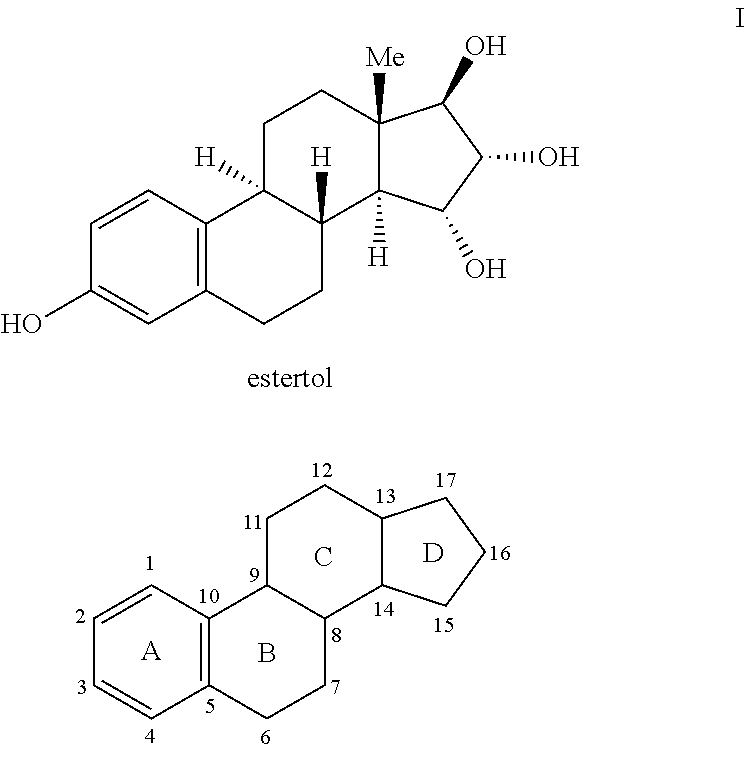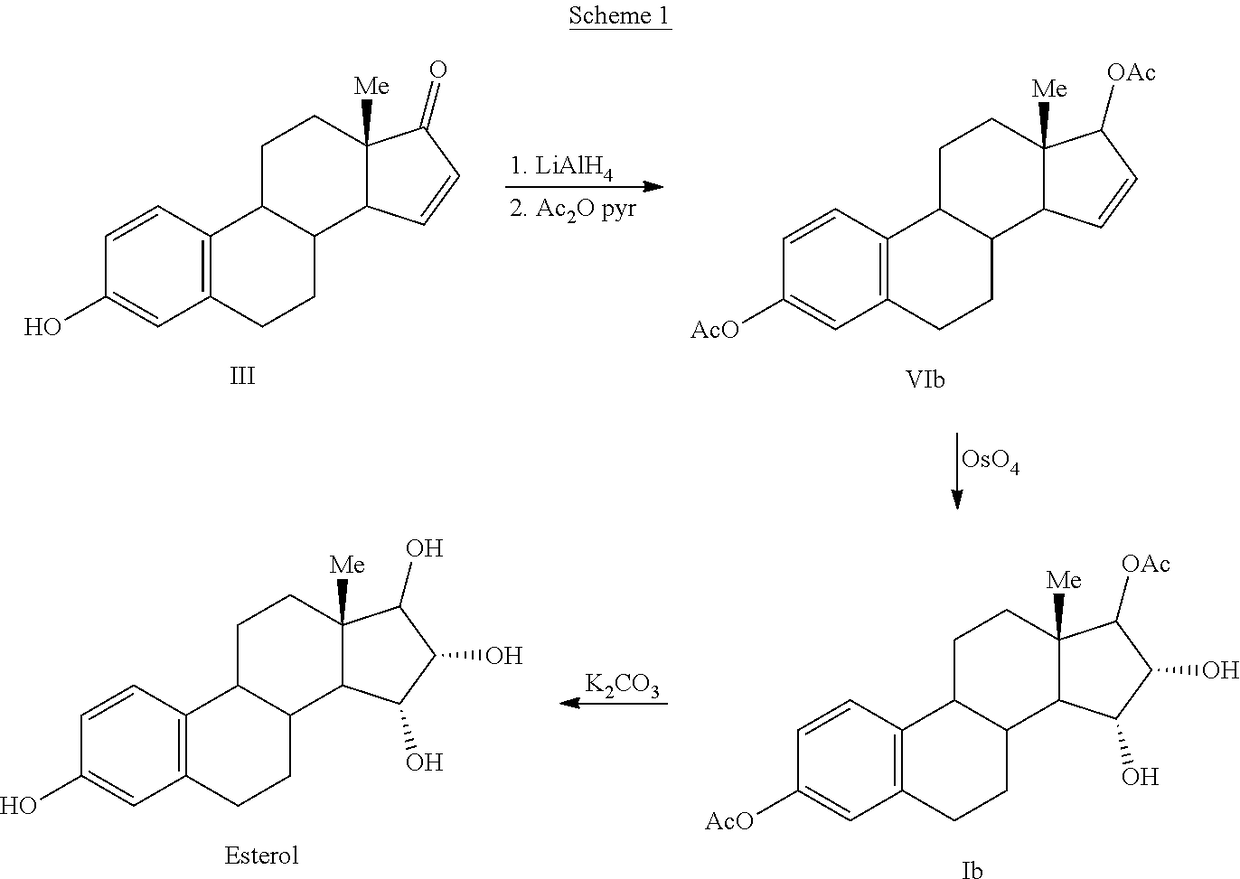Process for the preparation of estetrol
a technology of estetrol and process, which is applied in the field of process for obtaining estetrol, can solve the problems of large increase in process cost, loss of yield, and reduction of the overall yield of estetrol, and achieve the effect of high yield
- Summary
- Abstract
- Description
- Claims
- Application Information
AI Technical Summary
Benefits of technology
Problems solved by technology
Method used
Image
Examples
example 1
Preparation of Estrone-3-benzoate
[0195]
[0196]To 150 g of Estrone in 1500 mL of dichloromethane and 154 mL of triethylamine (d: 0.725 g / mL), 77.2 ml of benzoyl chloride were added at a temperature below 30° C.
[0197]After the addition, it was stirred at 20±5° C. until positive control by TLC. Then, 600 mL of a solution of 10% VN HCl was added, it was stirred and the two phases were separated. The aqueous phase was extracted with two aliquots of 300 mL of dichloromethane. The final organic phase was treated with 450 mL of 10% WN of sodium bicarbonate and was extracted again with an aliquot of 300 mL of dichloromethane. The resulting organic phase was treated with 450 mL of water. This aqueous phase was also extracted with an aliquot of 300 mL of dichloromethane. The final organic phase was concentrated under vacuum until a final volume of 450 mL. The solvent was changed with methanol by subsequent steps of addition and evaporation with three portions of 450 mL of methanol, concentratin...
example 2
Preparation of 17,17-ethylenedioxy-Estrone-3-benzoate
[0198]
[0199]207.5 g of starting material Estrone-3-benzoate were suspended in 415 mL of ethylene glycol and 207 mL of triethylortoformiate and 4.25 g of p-toluenesulfonic acid were added. It was stirred at 35±5° C. until positive control (about 15 hours). Then, 7.5 mL of pyridine were added at room temperature, and after stirring for 15 minutes, 2900 mL of water were added over the mixture. The suspension was stirred at room temperature for 30 minutes and filtered. It was washed with 620 mL of water and dried at 50° C. Final dry cake: 229.0 g of 17,17-ethylenedioxy-Estrone-3-benzoate. Yield: 99% Molar
example 3
Preparation of 16-bromo-17,17-ethylenedioxy-Estrone-3-benzoate
[0200]
[0201]A solution of 209 g of 17,17-ethylenedioxy-Estrone-3-benzoate in 627 mL of THF and 42 mL of ethylene glycol was added over 206,9 g of pyridinium bromide in 188 mL of THF. The addition is performed maintaining the temperature at 20±5° C. After positive control (40 minutes) a solution of sodium triosulfate 400 mL was added (this solution also can contain sodium carbonate). Then, dichloromethane (627 mL) was added and it was stirred at room temperature for 20 minutes. After separation, the solvent of the aqueous phase was changed by acetone 836 mL with distillations and charges of acetone, obtaining a final suspension of 400 mL. It was stirred at 0 / 5° C. for 1 hour and filtered. It was washed with 100 mL of acetone and it was dried at 50° C. Final dry cake: 218.6 g of 16-bromo-17,17-ethylenedioxy-Estrone-3-benzoate. Yield: 99% Molar.
PUM
| Property | Measurement | Unit |
|---|---|---|
| temperature | aaaaa | aaaaa |
| temperature | aaaaa | aaaaa |
| temperature | aaaaa | aaaaa |
Abstract
Description
Claims
Application Information
 Login to View More
Login to View More - R&D
- Intellectual Property
- Life Sciences
- Materials
- Tech Scout
- Unparalleled Data Quality
- Higher Quality Content
- 60% Fewer Hallucinations
Browse by: Latest US Patents, China's latest patents, Technical Efficacy Thesaurus, Application Domain, Technology Topic, Popular Technical Reports.
© 2025 PatSnap. All rights reserved.Legal|Privacy policy|Modern Slavery Act Transparency Statement|Sitemap|About US| Contact US: help@patsnap.com



